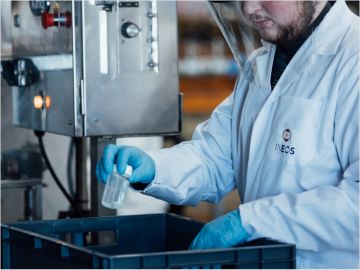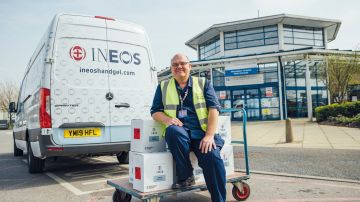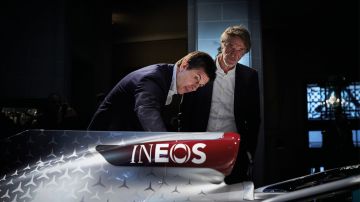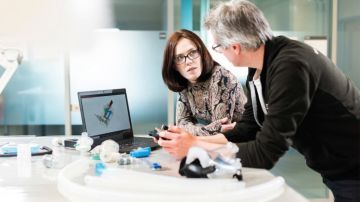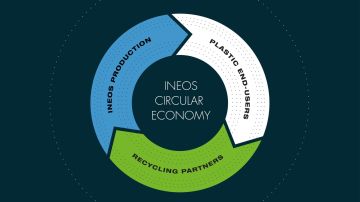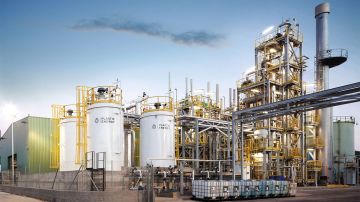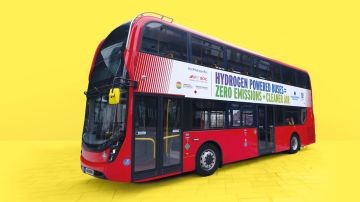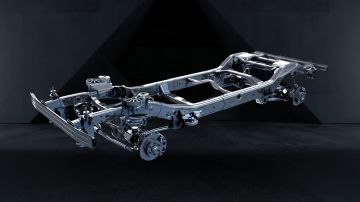Hydrogen has the power to change the world in ways we can only imagine. It already powers the sun, which, in turn, powers the world. But it can also power transport, businesses, even homes - and slash harmful greenhouse gas emissions.
“Most people agree that if society is to achieve net-zero emissions, the hydrogen economy must be given a huge boost,” said Dr Peter Williams, INEOS’ Group Technology Director. “And INEOS has the skills, capabilities and desire to help achieve this.”
INEOS’ businesses in the UK, Germany and Belgium are all now involved in hydrogen projects.
In the UK, INEOS-owned INOVYN, which produces thousands of tonnes of hydrogen a year as a co-product, is looking at how the gas could be used to run buses, cars and lorries and significantly improve the air quality in towns and cities.
INEOS could reuse the hydrogen it co-produces more widely, and also link its electrolysis technology to renewable energy to produce greater amounts of green hydrogen for transport, industry and homes.
INOVYN is a member of the UK-based North West Hydrogen Alliance which believes hydrogen is a workable, economically-viable alternative to fossil fuels. “Unlike fossil fuels, hydrogen will never run out,” said a spokesman. Hydrogen can be made from electrolysis of water, which produces the hydrogen as well as oxygen as a co-product.
The alliance’s aim is to have 25 hydrogen-powered buses, producing zero emissions, on the streets of Liverpool by the end of this year.
A number of INOVYN sites, including Runcorn, already have co-fired (hydrogen) boilers and have been using hydrogen that way to make steam for decades.
At INEOS’ Koln site in Germany, the power plant is also co-fired with hydrogen next to natural gas, and staff are looking at how they could feed hydrogen into the region’s power network so that it could be used to run inner-city public transport.
That all fits with Germany’s desire to build an economy based on hydrogen instead of fossil fuels so it can meet its Paris Agreement goals.
The UK is also looking at whether it can make hydrogen from natural gas. Unlike hydrogen produced from water, this would result in some carbon that would need to be captured directly then stored deep underground. “That could enable us to halve the emissions at our Grangemouth site in Scotland,” said Peter.
Carbon capture and storage is not always necessary with hydrogen production but, where it is, INEOS is well placed.
At the Port of Antwerp in Belgium, INEOS is working with a host of firms, including BASF, Total and ExxonMobil, on plans for carbon capture and storage. “INEOS can bring its experience because it is already capturing half of the Oxide process emissions in Antwerp,” said Dr Greet Van Eetvelde, INEOS' Group head of Energy and Innovation Policy and lead of CEN, INEOS' Carbon and Energy Network.
The technology to capture carbon is evolving rapidly and is on the verge of becoming economically viable. INEOS is also working on storage.
The Danish Council on Climate Change believes carbon capture could begin in 2025 and that storage could have a real influence in 2030.
“That's also our target,” said Johan Byskov Svendsen, INEOS Denmark Developing Assets Manager. “We're working from the assumption that it will be possible to store CO2 from the second half of this decade.” He added: “No other company operating in the country has made it as far with a CCS project as INEOS.”
So INEOS, which is planning to build the most energy-efficient ethylene cracker in Europe, will be well prepared. Once built, INEOS’ €3 billion ethylene cracker and world-scale PDH unit in Antwerp will emit half the CO2 emissions of similar-sized, ageing plants elsewhere in Europe because co-produced hydrogen will be used as fuel instead of natural gas. “This will be a pioneer in terms of technologies used, environmental impact and efficiency,” said Peter.
